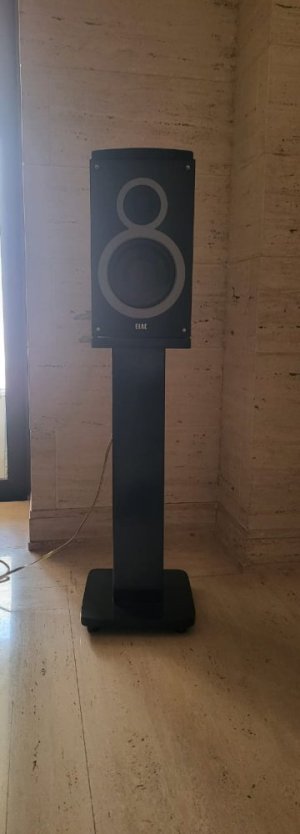Writing my experience with stands recently.
I was using DIY open frame oak stands(Tontrager Imitation by me with the help of a youtube video(with encouragement from dear forum member
@Orko ,he was very helpful in answering my questions.he use the same combination of speakers,stands and amplification)) for my Harbeth 30.1 /Croft combo.The sound was natural with no forced details yet very detailed and Dynamic with a beautiful midrange.
The open frame stand being very light was replaced recently with a heavy steel stand to protect the speakers from my kids

The steel stand was so heavy even without any filling .I tried the stands as it is (without filling even though there was long decay ringing).The sound was not to my liking in the exact speaker position as before .The bass became solid, but the system lost all the magic.Lost the natural dynamics if it makes sense.I tried different combination of spike vs solation etc under speakers , stand etc.. At some point it was the sounding out of phase /smeared to an extent that I even checked the wiring/connections.I filled the stands with sand, the ringing is gone but the sound is still not to my liking.I might go back to the wooden open frame stands.
Some background,
The above experience is in our new home/room.
In my previous home /room,(the amplification was also different at that time), the story was different. I never used the wooden frame stand even though I made it .I didn't like the sound at that time.It was too mid centric with not enough bass.So I was using glass stands with sand filling which gave me the sound I wanted.
And now I am preferring the open stands,Go figure, I have no idea, why is this so.Did my preference change? or Does this mean that stands are very important and would depend on setup room etc ...
Any one has similar experience , please share your thoughts.



